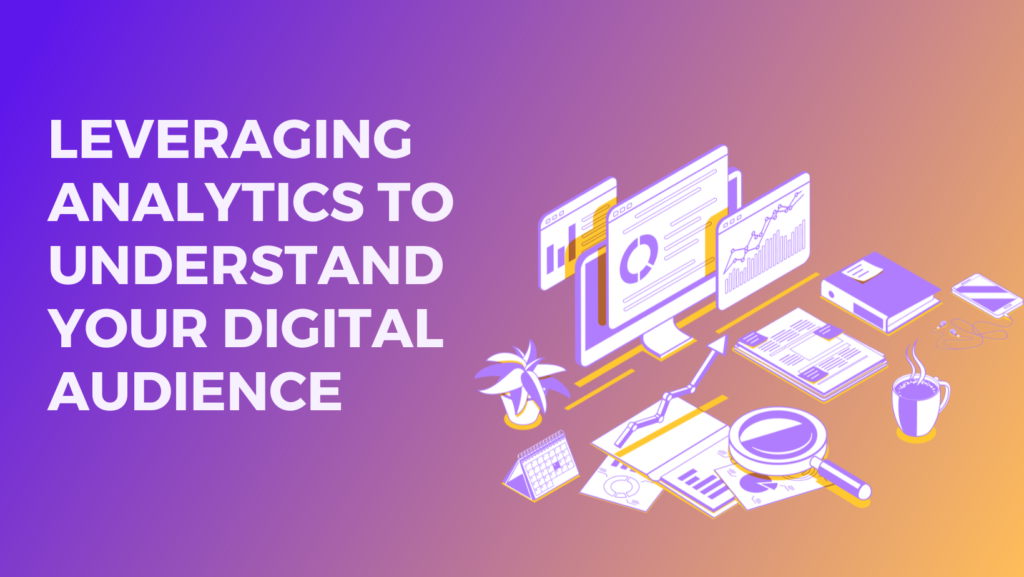
Understanding your audience goes beyond mere intuition; it requires precise and informed insights derived from data. Analytics play a crucial role in unveiling the preferences, behaviors, and engagement patterns of your readership, allowing you to refine your content strategy effectively. Here’s how you can leverage analytics to gain a deeper understanding of your digital audience and enhance their reading experience.
1. Identifying Reader Demographics
The first step in understanding your audience is to identify who they are. Analytics tools can provide detailed demographic data such as age, gender, geographic location, and even interests. This information is vital for tailoring your content to meet the specific needs and preferences of your audience segments.
2. Analyzing Engagement Metrics
Engagement metrics are key indicators of how your content resonates with readers. Metrics such as page views, time spent on page, and bounce rates can tell you what content captures interest and what does not. More advanced metrics like scroll depth and heat maps can show how readers interact with your content, indicating which parts are most engaging or where they lose interest.
3. Tracking Conversion Rates
For publishers looking to monetize their digital content, tracking conversion rates is essential. Analytics can show you how well your content leads to desired actions, whether it’s subscribing to a newsletter, purchasing a subscription, or clicking on affiliate links. Understanding these patterns allows you to adjust your calls-to-action (CTAs) and optimize content for better conversion.
4. Utilizing Behavior Flow Insights
Behavior flow within analytics tools helps you understand the path readers take through your digital magazine. This insight allows you to see the journey from entry to exit, highlighting potential content strengths and weaknesses along the way. Adjusting the flow or restructuring your magazine based on these insights can significantly enhance user experience and retention.
5. Segmenting Your Audience
Audience segmentation is a powerful feature of analytics that allows you to group readers based on similar behaviors or characteristics. Segmentation can help you create more targeted and personalized content, which is more likely to engage and retain readers. For example, you can tailor content strategies for new visitors differently from returning visitors, or develop unique content for different geographic regions.
6. A/B Testing for Content Optimization
A/B testing is an experimental approach where two or more versions of a content piece are shown to different segments of your audience to determine which one performs better. This method can be crucial for understanding what headlines, images, or even content formats your audience prefers. Analytics provide the data needed to make informed decisions about content optimizations.
Analytics are not just numbers; they are insights into what your audience truly wants and how they interact with your content. By leveraging these insights, you can create a more engaging and personalized reading experience that not only attracts but also retains readers. In the competitive field of digital publishing, those who understand their audience best will lead the way. Embrace analytics to unlock this understanding and drive your digital magazine’s success.
Case Study 1: Lifestyle Magazine’s Targeted Content Strategy
Background: A popular lifestyle magazine was experiencing a decline in reader engagement and subscription renewals. They decided to implement an analytics-driven approach to revamp their content strategy.
Action: Using Google analytics from within their digital magazine, the team analyzed demographic data and reader behavior patterns. They discovered that articles about eco-friendly living and sustainable travel were particularly popular among readers aged 25-34.
Result: By focusing on creating more content around sustainability tailored to this demographic, the magazine saw a 40% increase in engagement on these topics and a 15% rise in subscription renewals within this age group over the next quarter.
Case Study 2: Tech News Website Boosts Ad Revenue
Background: A tech news website wanted to increase its advertising revenue but struggled with low click-through rates on its ads.
Action: The website used analytics to track which articles generated the most traffic and at what times readers were most active. They optimized ad placements to coincide with high-traffic articles and peak viewing times.
Result: This strategic placement led to a 25% increase in ad click-through rates and a 30% increase in ad revenue over six months.
Case Study 3: Educational Content Publisher Improves User Experience
Background: An educational publisher noted a high drop-off rate in its digital learning modules. They suspected that the content flow might be causing user frustration.
Action: Through behavior flow analysis and heat mapping, the publisher identified that users were consistently dropping off at dense, text-heavy sections of the modules.
Result: The publisher redesigned these sections to include more interactive elements and bite-sized information, resulting in a 50% decrease in drop-off rates and a 35% increase in module completion rates.
Case Study 4: Fashion Retailer Enhances Personalization
Background: A fashion retailer’s online magazine was seeing poor performance in its personalized content recommendations.
Action: They implemented advanced segmentation and predictive analytics to refine their understanding of customer preferences based on past browsing and purchase behavior.
Result: With more accurately targeted content recommendations, the retailer saw a 45% increase in click-through rates from the magazine to the product pages, and overall sales from referred traffic increased by 20%.
Case Study 5: Sports Content Platform Optimizes Mobile Experience
Background: A sports content platform recognized that a significant portion of their traffic came from mobile devices, but engagement was lower on mobile compared to desktop.
Action: The platform conducted a detailed analysis of mobile user interactions and discovered that load times were slow, and the mobile layout was not optimized for easy consumption.
Result: After optimizing the mobile experience, the platform noted a 60% improvement in engagement from mobile users and a 40% increase in time spent on the site by these users.







